The Intricate Tapestry of Human Nature: Unraveling Agatha Christie’s “Murder on the Orient Express”
“Murder on the Orient Express,” penned by the “Queen of Crime,” Agatha Christie, is not merely a whodunit; it’s an exploration of the complex, often contradictory, facets of human nature. Inspired by the tragic Lindbergh kidnapping case of 1932, Christie masterfully constructs a tale far more profound than its surface mystery, delving into the interplay of good and evil that resides within us all.
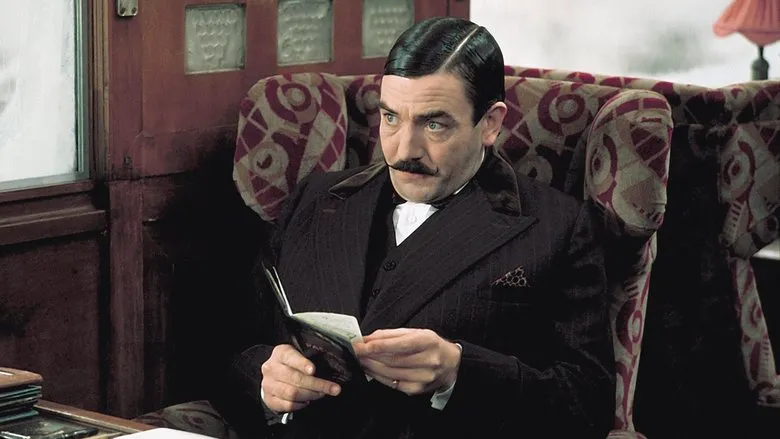 Image of Agatha Christie’s Murder on the Orient Express
Image of Agatha Christie’s Murder on the Orient Express
Aboard the Orient Express: An Unlikely Gathering
The renowned Hercule Poirot finds himself unexpectedly aboard the Orient Express, thanks to his friend Mr. Bouc. What begins as a simple journey quickly descends into a complex investigation as Poirot encounters a diverse group of passengers, each concealing their own secrets. This luxurious train carriage, usually spacious, is now a melting pot of nationalities and backgrounds, creating a peculiar setting ripe with potential secrets.
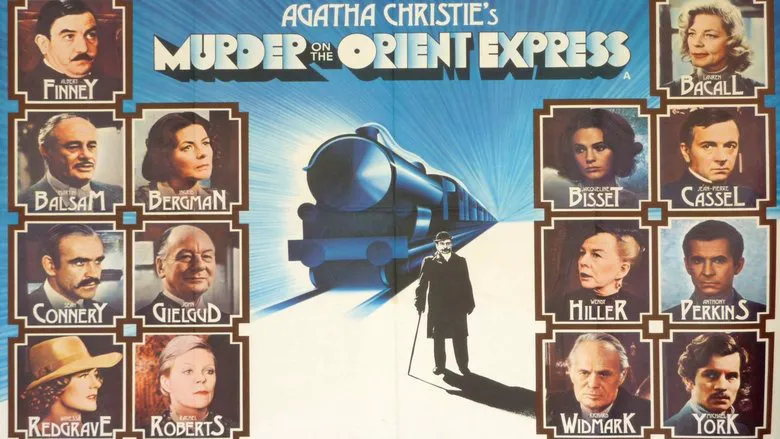 A luxurious view of the Orient Express train
A luxurious view of the Orient Express train
The passengers—wealthy businessman Mr. Ratchett, the boisterous Mrs. Hubbard, the aristocratic Princess Dragomiroff, and others with unknown agendas—create an atmosphere thick with intrigue. Poirot, ever observant, takes mental notes, unaware of the drama that will soon unfold.
The Murder and the Initial Investigation
Tensions rise after Ratchett expresses his paranoia that he’s receiving death threats, but Poirot dismisses him casually. The next morning the train is halted in a snowdrift, and Ratchett turns out dead. Bouc desperately asks Poirot to investigate due to the negative attention a murder on the train would bring.
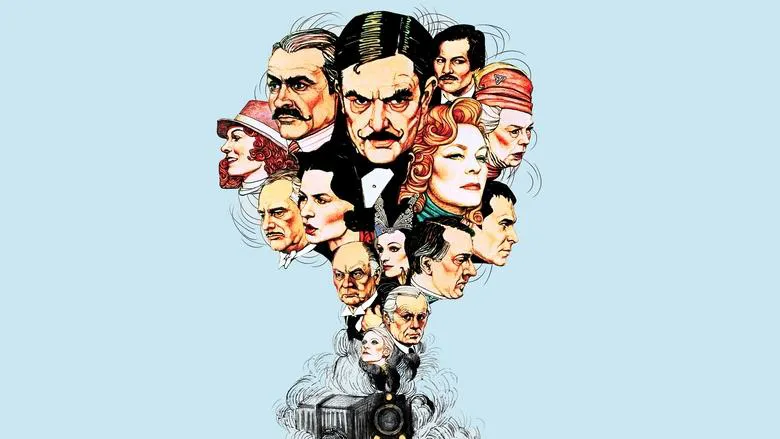 Image of Hercule Poirot investigating the murder
Image of Hercule Poirot investigating the murder
The initial examination of the scene reveals the door locked from the inside, an open window devoid of fingerprints, and twelve wounds inflicted with varying force. A handkerchief bearing the initial “H” and a burnt note mentioning “Daisy Armstrong” further muddy the waters. Upon realizing Ratchett was the kidnapper and murderer of Daisy Armstrong, Poirot begins interviewing the passengers.
Clues and Contradictions: A Tangled Web
As Poirot delves deeper, inconsistencies begin to surface. Alibis intertwine, and seemingly solid stories crumble under scrutiny. A button from a conductor’s uniform, a bloodstained dagger, and the supposed sighting of a mysterious conductor all point towards a carefully orchestrated plot, or the killer leaving the train. The passengers provide evidence and clues, but how accurate are they?
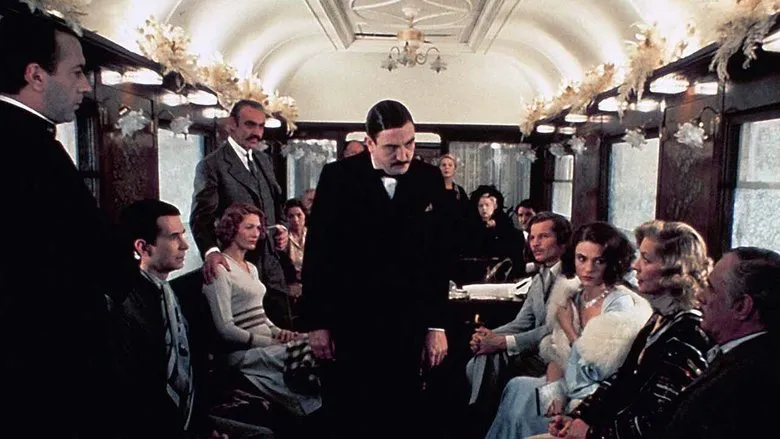 Crime scene image inside the Orient Express showing the luxurious cabins.
Crime scene image inside the Orient Express showing the luxurious cabins.
Unmasking the Truth: A Conspiracy Revealed
Poirot’s relentless pursuit of the truth unearths a shocking revelation: Countess Andrenyi’s obscured passport; a forgotten red dressing gown. The supposed strangers are connected to Daisy’s history and orchestrated revenge, and, the identities are being blurred. The passengers each had a reason to hate Ratchett because of his deep sins. Many of seemingly harmless aspects of the evidence were carefully orchestrated to make their stories believable.
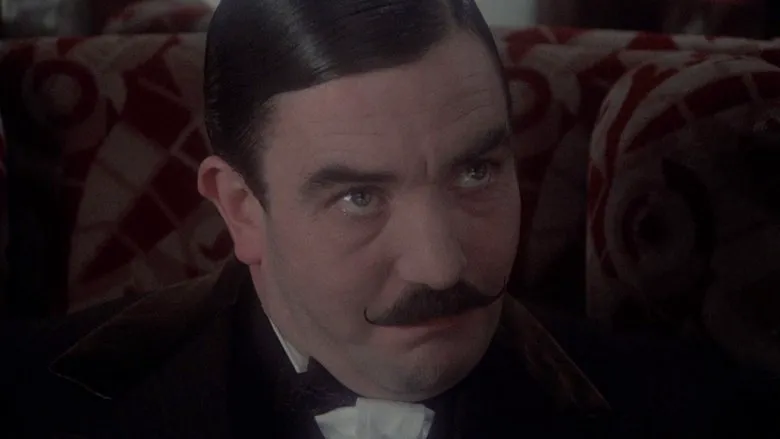 The passengers aboard the Orient Express
The passengers aboard the Orient Express
The twelve passengers decided to execute the deserved death sentence that Ratchett dodged, seeking justice for Daisy’s love ones. With MacQueen approaching first, the events were carefully being setup to make sure Ratchett was aboard the Orient Express. Once on board, the twelve people, by means of trickery, then murdered Ratchett on the train. Countess Andrenyi pulled a red dressing gown to muddy the waters some more, but Poriot’s attention to detail and intellect shined through!
Reflections on Human Nature: Good vs. Evil
This revelation leads Poirot to a moral quandary. Was the right result being achieved through wrong means? Is it good or evil for the “jury” acting out of justice? Was their decision made because of the lack of a proper ruling from society?
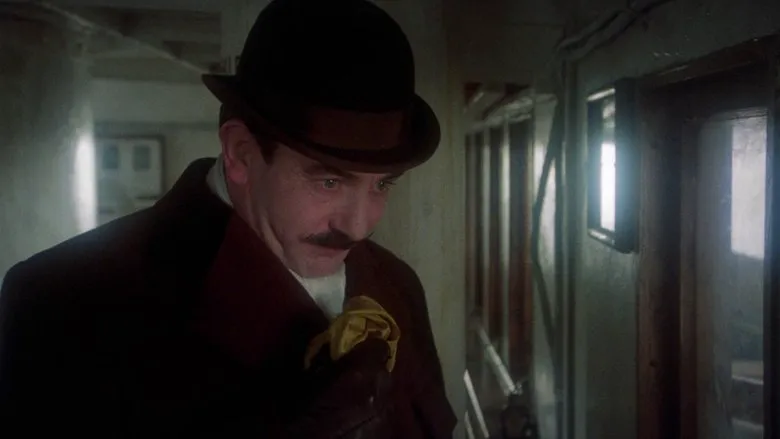 On-set depiction of the filming of Murder on the Orient Express
On-set depiction of the filming of Murder on the Orient Express
Poirot questions whether something is good or evil based on someone’s subjective feelings, and whether or not appearances make people make swift assumptions, “Do not immediately condemn evil when you hear of it, lest you vent anger for a slanderer”.
He realizes that the world is not as simple as right and wrong, and comes to the conclusion, the truth is complicated as good and evil. By understanding the lack of the world not being black and white, gives one more tolerance and compassion of situations.
Ultimately, Poirot chooses to present a false conclusion to the authorities, claiming the killer escaped, giving the group a second chance.
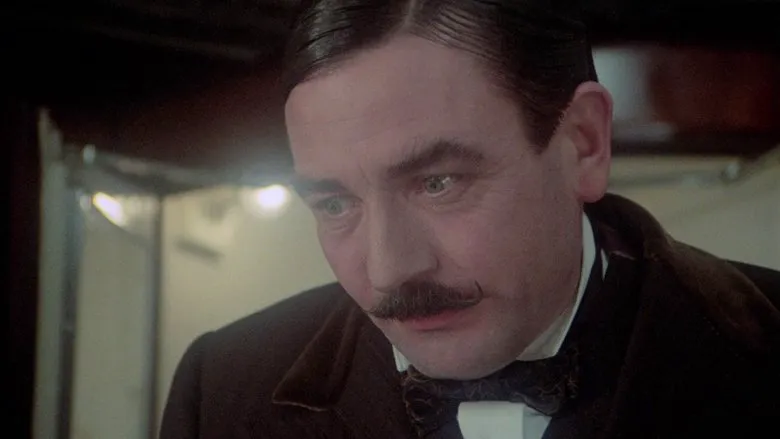 Hercule Porio, in a pensive reflection about the moral dilema.
Hercule Porio, in a pensive reflection about the moral dilema.
The world is complex, like a rose one day and a snake venomously poisoning you the next. Live rationally and understand complex situations.
Beyond the Mystery: A Commentary on Morality
“Murder on the Orient Express” transcends the typical murder mystery; it’s a profound exploration of morality, justice, and the complexities of human nature. Each facet is interwoven with being in a dark state as well weighing the pros and cons over the other. Yukio Mishima puts it best, people don’t realize roses and snakes could be close friends. Understanding the greeds, anger, and ignorance allow someone to not speculate different things or people.
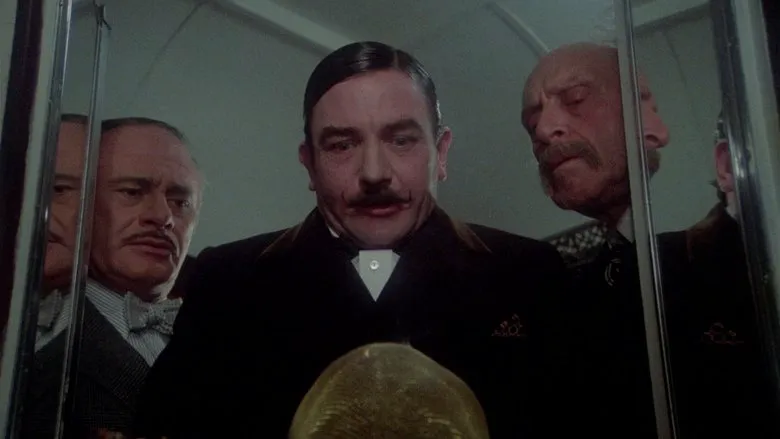
An in-depth look into the wintery cabin for the Orient Express.
The brilliance in this case lies not only in solving the crime element, but in deconstructing the complicated truth behind human nature. Good and evil are never opposing faces but intertwine with each other.